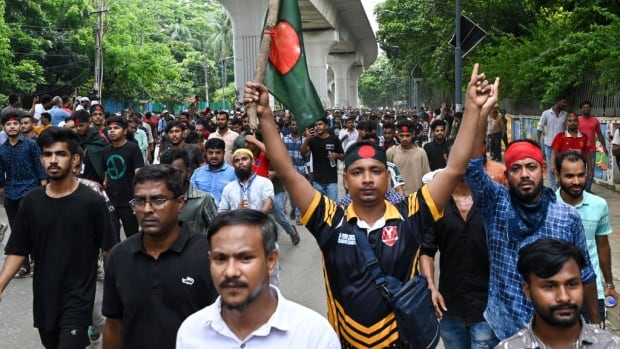As many of Gaza’s more than 2.3 million people desperately wait for humanitarian assistance and food to reach them, aid trucks are being violently ransacked before getting to their destination, say international organizations.
The ongoing restrictions on what can come in and out of Gaza and the looting of some of the supplies that have made it in have left much of the population with little access to basic items.
In northern Gaza, aid groups have described the situation as “apocalyptic” as intense fighting between Israeli forces and Hamas continues, cutting off the remaining residents from food and services and leaving them vulnerable to airstrikes.
But in central and southern Gaza, it’s the looting that is disrupting the flow of aid and hiking up prices of food and other essential items.
On Monday, United Nations agencies said 98 of 109 trucks carrying food for Palestinians were looted Saturday in what they described as one of the worst aid losses in the 13-month long war.
The recent food convoy raids have prompted Hamas and its allies to form a new armed group to combat the ambushes.
While a lot remains unclear about who is carrying out the raids and what is being done to stop them, here’s what we know so far.
How does aid get it into Gaza?
The main way humanitarian aid gets into the Gaza Strip, which borders Israel to the north and east and Egypt to the south, is through five Israeli-controlled border crossings that are open to pre-approved goods or people, according to UN data as of Tuesday.
Each truck is closely inspected by Israeli officials at checkpoints before it is allowed to enter.
Another method of delivering aid has been through air drops, but that has proven not so viable. Air drops can’t deliver the same amount of aid as trucks, and they leave civilians vulnerable.

Last week, aid packages were dropped from planes west of Khan Younis, where some Palestinians were waiting for hours for it but reported leaving empty-handed after being shot at by locals sheltering in nearby fields trying to secure the aid for themselves.
Ahmed Al-Ghoul was one of the people waiting for the drops. He told CBC News he ran for several kilometres in hopes of retrieving one of the boxes, but he and others were shot at by people sheltering in the fields.
“A child was shot in front of me,” he said.
The search for food in Gaza has grown more difficult as the Israel-Hamas war drags on, and as the potential for famine sets in, the rush toward aid packages dropped from planes can potentially be lethal. One man told a freelance videographer for CBC News that there are families sheltering in the fields where some drops happen, and if boxes land nearby, they are claimed and those families will shoot anyone who comes near them.
Why does looting happen?
In the most recent looting incident, a food convoy organized by UNRWA and the World Food Program (WFP) was instructed by Israel to depart from the Kerem Shalom border crossing at short notice via an unfamiliar route.
Louise Wateridge, a senior emergency officer with UNRWA, said trucks in that convoy were raided by a group of armed men and some of the drivers were injured.
“This … highlights the severity of access challenges of bringing aid into southern and central Gaza,” she told Reuters Monday.
“The urgency of the crisis cannot be overstated: without immediate intervention, severe food shortages are set to worsen, further endangering the lives of over two million people who depend on humanitarian aid to survive.”
Israel put imports of commercial goods on hold last month, and only aid trucks have entered Gaza since then, carrying a fraction of what relief groups say is needed for a territory where most people have lost their homes and have little money.
The Kissufim crossing in central Gaza was reopened last week to facilitate the flow of aid into the southern part of the Gaza Strip, but aid groups say only an average of 42 trucks a day are being allowed into Gaza.
“It’s getting harder and harder to get the aid in,” said World Health Organization spokesperson Margaret Harris.
Shimon Friedman, a spokesperson for COGAT, disputed that number and said the problem is distribution. There are currently between 700 and 900 aid trucks waiting on the Gazan side of the Kerem Shalom border crossing, he said.
Who’s to blame?
It is unclear exactly how the aid truck ambushes are carried out and whether the people responsible are part of organized groups within Gaza, and Israel and Hamas have put the blame on each other.
Israel accuses Hamas of hijacking aid. The militant group denies that and accuses Israel of trying to foment anarchy in Gaza by targeting police guarding aid convoys, Reuters said.
The Washington Post reported earlier this week that an internal UN memo obtained by the newspaper suggests the gangs carrying out the raids are “‘benefiting from a passive if not active benevolence’ or ‘protection'” from the IDF.
Local residents have told the paper that the looters are tied to local crime families who are at odds with Hamas and have branched out from smuggling and other criminal activities to ransacking aid deliveries.
Aid groups in Gaza say the food crisis is continually getting worse and the limited supplies aren’t getting to those who need them. Israel says there is enough food and few people are going hungry — despite evidence to the contrary.
In a statement Monday, Gaza’s Interior Ministry said the organized groups are active in areas controlled by Israel, accusing the IDF of providing “full support” and alleging that the criminal groups have established “warehouses” near Israeli forces, specifically east of Rafah.
The ministry said the criminal groups also impose royalties on merchants who had been allowed to bring goods in, resulting in a “huge rise” in prices for some necessities. Before the war, a sack of flour sold for $10 US or $15 and a kilogram of milk powder for $11. Now, the flour costs $100 and the milk powder more than $110, traders told Reuters.
CBC News reached out to the IDF and COGAT (Co-ordination of Government Activities in the Territories), which oversees the movement of goods into the Gaza Strip, Tuesday morning but did not get a response.
What are aid groups saying?
A WFP spokesperson confirmed the Saturday incident and said that many routes in Gaza were currently impassable due to security issues posed by the ongoing fighting between Hamas and the IDF.
Janti Soeripto, CEO of Save the Children U.S., says given the severely damaged or destroyed infrastructure in Gaza, food and aid distribution becomes increasingly difficult to control for organizations.
Soeripto says a big driving force in the recent spate of looting is the sheer lack of food and supplies.
“There is such scarcity and desperation that we should not be surprised that once supplies do come in once every so often, that there is then a higher risk of looting. That is created by the scarcity in and of itself,” she told CBC News last week.
Soeripto said the the only way to combat that scarcity and allow aid to be distributed safely is to pause the fighting.
“Children are starving, [they] are dying from completely preventable causes, essentially massive casualties … and it is essentially man made,” she said.
“If you flood the Gaza Strip with aid in the way that we’ve said … for months — clean water, food, shelter, basic items — that risk will come down substantively.”
What is Hamas doing about the looting?
Hamas’s response to the looting has been to form a force made up of its own fighters and allied groups tasked with preventing gangs from pillaging the aid convoys, residents and sources close to the militant group told Reuters.
Since it was created earlier this month amid rising public anger at aid seizures and price gouging, the new force has ambushed looters and killed a number of them in armed clashes, the sources said.
Those charged with protecting the aid are reportedly ready to open fire on any looters who do not surrender immediately, one of the sources, a Hamas government official, told Reuters.
The official, who declined to be named because Hamas would not authorize him to speak about the situation, said the Hamas force has been operating across central and southern Gaza and had carried out at least 15 missions so far, including the killing of some “armed gangsters.”
What do Gazans want to happen?
Some people in Gaza say they want Hamas to target looters.
“There is a campaign against thieves, we see that,” Shaban, a displaced Gaza City engineer, now living in Deir Al-Balah in the central Gaza Strip, told Reuters.
“If the campaign continues and aid flows, the prices will go down because the stolen aid appears in the markets at high cost.”
Diyaa Al-Nasara, who spoke to Reuters as a funeral took place for a Hamas fighter killed in clashes with looters, said most people support the crackdown.
“We are all against the bandits and looters so we can live and eat,” Al-Nasara said. “Now, you are obliged to buy from a thief.”
Dozens stood outside the only operating bakery in Khan Younis in central Gaza Monday morning in hopes of getting their hands on bread to feed their families. Palestinians say despite waiting daily for hours, they are often leaving empty-handed amid a flour shortage and bakery closures that have exacerbated an already dire food situation in the besieged enclave.
Hamas’s efforts to take the lead in securing aid supplies point to the difficulties Israel will face in a post-war Gaza, with few obvious alternatives to a group it has been trying to destroy for more than a year and which it says can have no governing role.
“Hamas as a movement exists, whether someone likes it or not,” the Hamas official told Reuters. “Hamas as a government exists, too, not as strong as it used to be, but it exists and its personnel are trying to serve the people everywhere in the areas of displacement.”
But Israeli Prime Minister Benjamin Netanyahu reiterated Tuesday that Hamas would not rule Gaza after the war. During a visit with his defence minister in central Gaza, Netanyahu alleged that Israel had destroyed the Islamist group’s military capabilities.
He also offered a $5 million reward to anyone who brought one of the Israeli hostages who remain captive inside Gaza to the IDF.
Front Burner43:14UN Palestinian rapporteur Francesca Albanese
Francesca Albanese, the UN Special Rapporteur on the Occupied Palestinian Territories, recently returned from a week-long trip to Canada. She was given standing ovations at sold-out speaking events, yet also faced backlash from groups who called for the Canadian government to condemn her, and advocated for the UN to remove her from her position.
Today, a wide-ranging conversation with Francesca Albanese.
For transcripts of Front Burner, please visit: https://www.cbc.ca/radio/frontburner/transcripts










